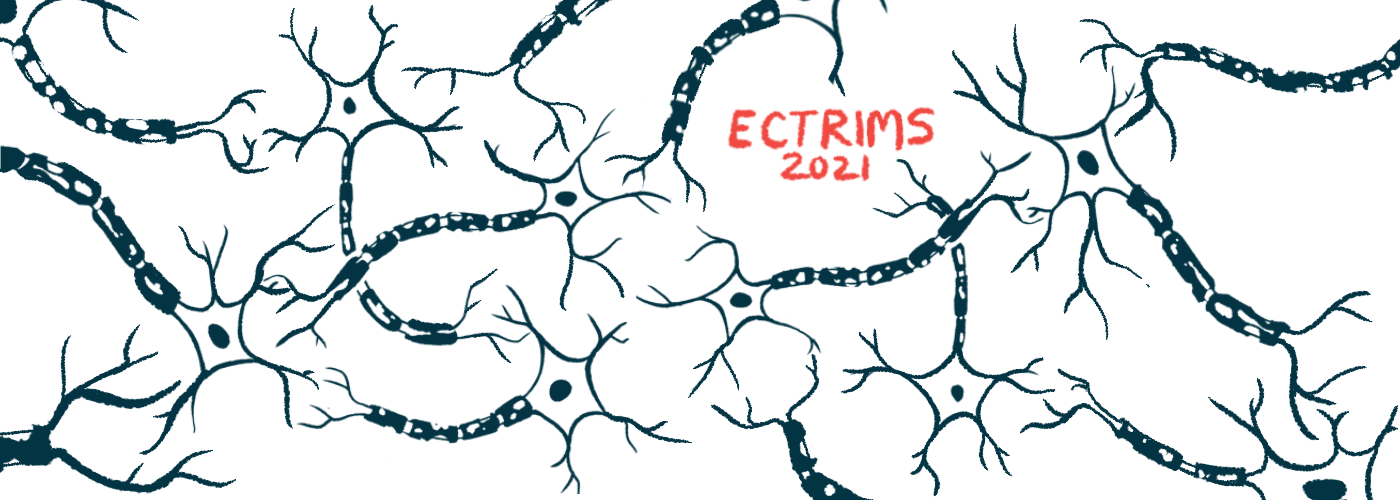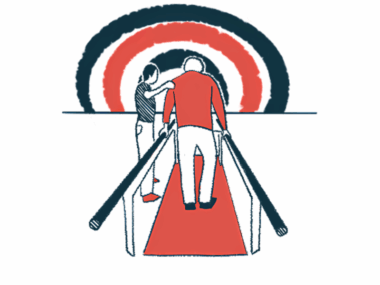#ECTRIMS2021 – App’s Use Prolongs Gains of Spasticity Rehab Program
Written by |

Editor’s note: The Multiple Sclerosis News Today team is providing in-depth coverage of the virtual 37th Congress of the European Committee for Treatment and Research in Multiple Sclerosis (ECTRIMS), Oct. 13–15. Go here to see the latest stories from the conference.
Four weeks of an anti-spasticity rehabilitation program significantly lessened leg spasticity and improved strength and mobility in people with multiple sclerosis (MS), according to data from a multicenter study in Austria.
These benefits were sustained after the program ended, when patients continued rehab with a 12-week and individualized program given using a newly designed app, but not when delivered through a conventional, illustrated booklet.
Findings support this combination of inpatient followed by app-based, at-home rehabilitation for the effective and sustained management of spasticity in MS patients.
Program results were shared by Rainer Ehling, MD, with the Clinic for Rehabilitation Münster at the 37th Congress of the European Committee for Treatment and Research in Multiple Sclerosis (ECTRIMS), held virtually Oct. 13–15.
His oral presentation was titled, “Successful long-term management of spasticity in people with multiple sclerosis using a software application (App): Results from a randomized-controlled, multicenter study.”
Spasticity is a common MS symptom, causing muscles to feel stiff and heavy, and making movement difficult, ultimately affecting patients’ well-being and overall quality of life. Currently, its successful long-term management remains challenging.
While rehabilitation programs based on physical therapy are recommended as a first-line treatment for MS-related spasticity, “there is only poor evidence for one specific therapeutic approach,” emphasizing “the need for well-designed and large, multicenter clinical trials,” Ehling said.
Ehling and colleagues at six other Austrian rehabilitation centers evaluated whether multidisciplinary and inpatient rehabilitation (MIR) followed by an individualized, self-training program delivered by either an app — the MS-spasticity app — or an illustrated booklet could reduce spasticity in 115 MS patients.
Participants had moderate to severe leg spasticity, and all were able to walk.
The four-week MIR program included 85 exercises targeting leg spasticity and requiring minimal equipment, designed by a panel of physiotherapists. Exercises were adapted for different degrees of disability and spasticity.
The 94 people with a clinically relevant improvement in spasticity — defined as a 20% or greater improvement in the patient-reported Numerical Rating Scale for spasticity (NRS-S) — were then randomly assigned to undergo a 12-week self-training program using either the MS-spasticity app (47 patients) or a conventional booklet (47 patients).
Self-training programs were tailored for each patient and included at least 20 exercises, which were shown in the app through short videos on a daily basis for 30 minutes, or depicted in the booklet through printed pictures.
The MS-spasticity app, which also contained reminders and motivating functions, was designed to help maximize adherence to self-training after the inpatient program, Ehling noted.
It was previously tested in 20 MS patients in a pilot study, allowing an estimation of the number of patients needed to confirm its therapeutic benefits in this larger, well-designed trial.
Patients undergoing self-training programs were representative of a typical MS group, Ehling noted, with a mean age of 50, a female predominance, and a 15-year disease duration.
One-third were on anti-spastic medication, which was not allowed to be changed during the 12-week, randomized at-home period.
A total of 43 (91.5%) patients in the app group and 37 (70.2%) in the booklet group completed their respective 12-week individualized program, reflecting better adherence with the app. Reasons for withdrawal included disease relapse, lack of time, loss to follow-up, and technical issues.
The study’s main goal was to assess changes in patients’ NRS-S, while secondary goals included changes in Modified Ashworth Score (MAS) — an objective clinical measure of muscle tone and spasticity — and in strength, mobility, and adherence to self-training.
Results showed that the four-week MIR program led to a significant reduction in patients’ spasticity, as assessed with both the NRS and MAS, as well as a significant improvement in strength and mobility. The proportion of patients showing improvements in these measures ranged between 30% and 80%, Ehling said.
Following MIR, people who underwent self-training with the app saw their spasticity further ease, while those guided by the booklet showed a trend toward spasticity worsening, resulting in a statistically significant difference of 1 point in the NRS-S scale between the groups.
Group differences in terms of other secondary outcomes also favored the app, but did not reach statistical significance.
These findings highlight that multidisciplinary inpatient rehabilitation is able to significantly reduce both patient-reported and objectively measured spasticity in MS patients who can still walk, Ehling said.
Notably, these improvements “were clinically relevant” and “associated with a better mobility,” he added.
In addition, continued rehab via an individually tailored anti-spasticity program delivered by the MS-spasticity app is “effective in sustaining this improvement for a period of 12 weeks, as compared to a conventional home therapy program,” Ehling said, adding that the app’s use was also associated with a higher adherence to self-training.
Still, downloading the app won’t be enough to provide successful, long-term reductions in MS-related spasticity, Ehling noted, since “it is crucial to carefully evaluate [MS patients] before the therapy and [to conduct] professional individualization of the self-training program.”
The study was funded by a research grant from the Austrian Society of Neurorehabilitation and from the company Almirall Austria.






